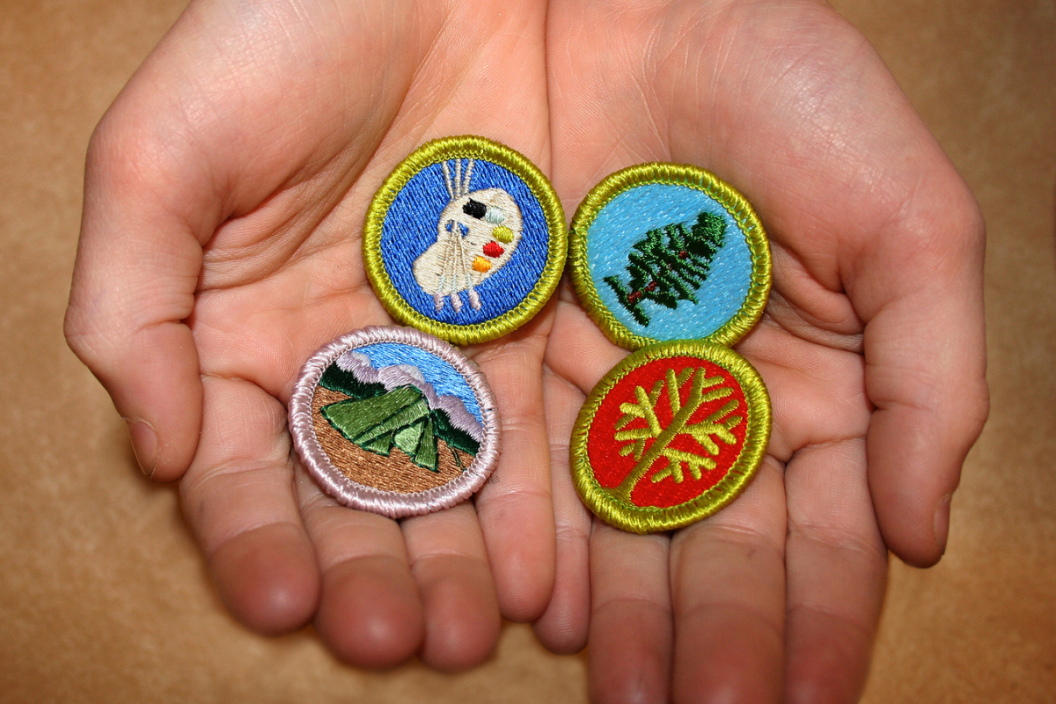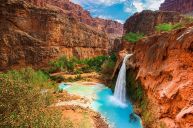When people think of the Boy Scouts of America, merit badges often come to mind. But what many folks don't realize is there are a lot of different badges out there.
To climb the ranks to Eagle Scout, which has a badge of its own, a scout must first earn 21 merit badges. Merit badges don't represent rank, but they do help a scout move up in levels. Of the 21 badges necessary to get to Eagle, the scout in question has to choose one of the following: swimming, cycling, or hiking.
I Want to Hike Like an Eagle
https://www.instagram.com/p/B8LO-6CnMlf/
Unlike the requirements of other merit badges, badges necessary for the rank of Eagle can be pretty difficult to earn. The hiking badge is no exception, as it demands scouts walk many continuous miles, which means a lot of aerobic activity. It's exactly these sort of longer hikes and other trying challenges that push older scouts beyond their Cub Scout days.
By the time a scout reaches the rank of Eagle, they will have done plenty of 20-milers, which is why getting the hiking badge is a bit of a no-brainer. What's more, a lot of the things you have to do to earn the hiking badge can be completed while simultaneously earning the Backpacking Merit Badge. This double dipping is why a lot of scouts aim for hiking over swimming and cycling.
While the list below will give you a good idea of what a scout should expect if they want their Hiking Merit Badge, it doesn't cover everything. Fortunately, updated merit badge pamphlets are free and available online.
Hiking Merit Badge Requirements
https://www.instagram.com/p/CL7P9yZH4xg/
RELATED: Hiking Hanging Rock State Park is a Dream Come True
There are a total of 6 requirements a scout must complete in order to earn their Hiking Merit Badge.
1. This step mostly has to do with hiking safety. The scout must go over hazards hikers need to be wary of with their merit badge counselor, Scoutmaster, or whatever relevant authority is guiding them through the process.
In addition to going over what hikers should avoid and how, the scout has to demonstrate a thorough knowledge of first aid for hiking. This means the scout has to explain how to treat:
- Heat exhaustion
- Sprained ankles
- Insect stings
- Blisters
- Frostbite
- Hyperventilation
- Snakebites
- Altitude sickness
And the list goes on! So, as you can see, to earn the badge, a scout needs to more or less become an EMT.
2. The scout must discuss and show examples of good hiking practices. This covers trail knowledge including things like proper care of feet and the right choice of footwear. Perhaps more importantly, the scout has to prove they understand proper outdoor ethics, including principles like "leave no trace".
https://www.instagram.com/p/CKDGD0QFdcQ/
3. Since physical fitness has a lot to do with the hiking badge and scouting in general, a scout needs to understand the relationship between hiking and aerobic activity. To do this, scouts have to explain how they would condition themselves for a serious 10-mile hike.
4. After completing the above steps, a scout working on the badge will probably be pretty eager to hit the trail. This requirement lets them do just that. Here, the scout must do five continuous hikes in exactly this order: one 5-mile hike, three 10-mile hikes, and one 15-mile hike.
Why it has to be in this order, we couldn't tell you, though it probably has to do with gradual conditioning. But just to be sure, please note that these don't have to be forced marches. Scouts are encouraged to make the usual pits stops for short rests and a trail lunch.
Top top it all off, before the scout sets out on each hiking adventure, they must prepare a thorough hike plan.
https://www.instagram.com/p/CCCrS6QnqA9/
5. Following a hike plan the scout prepared on their own, they must take a 20-mile hike. They can stop for the usual meals and breaks, but can't have an extended overnight rest or anything that luxurious. Teleportation and other magical means of conveyance are also prohibited.
6. Just to make sure the scout doesn't have too much fun, they must write a reflection after each of the hikes listed above. These reflections should include descriptions of routes and observations the scout made concerning things like weather and other notable things they came across.
Have any tips or tricks for scouts earning their Hiking Merit Badge? Share your wisdom on our Wide Open Roads Facebook!




